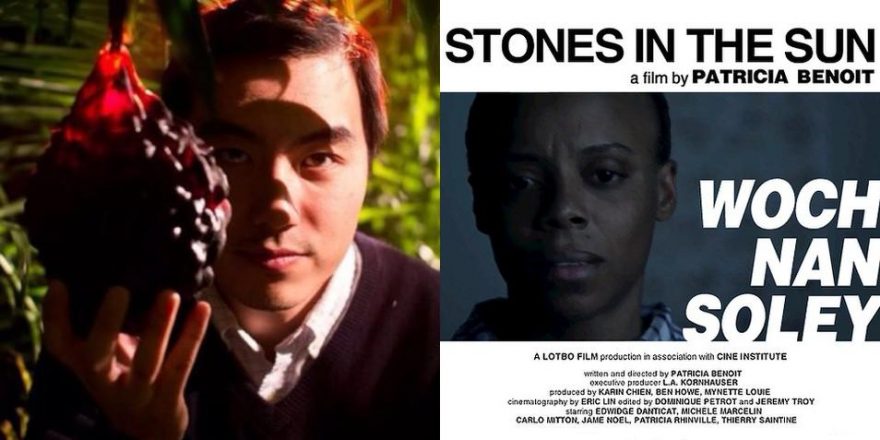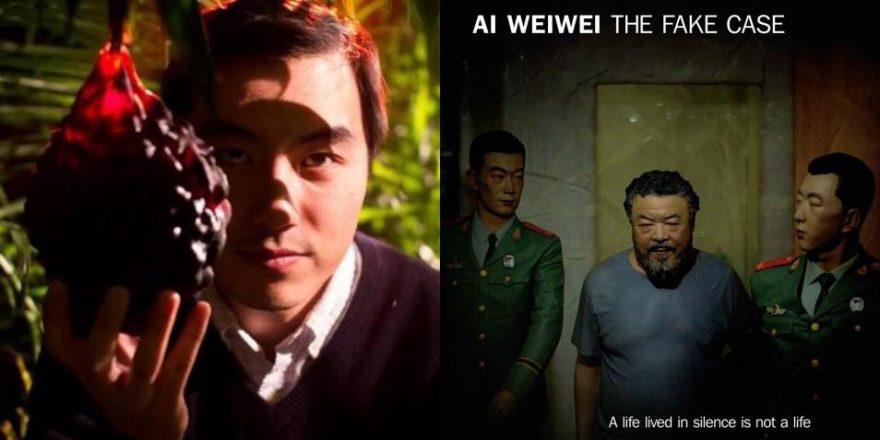There’s a moment in the opening scenes of Stones in the Sun — Patricia Benoit’s intimate and searing debut feature — that I just can’t shake. Vita (Patricia Rhinvil) has just arrived in New York from Haiti. She’s been waiting for her husband at the airport arrivals terminal. There’s a familiarity about this scene. The anticipation that we’ve all experienced at one time in our lives when the past collides with the future, when all the weight and expectation of a moment of reconnection hangs on that first greeting. More often than not, you’re in a train station, an airport terminal or a bus stop. Vita glances around the terminal. She clutches a Dollar Store laundry bag. We see her point-of-view: the staid, fluorescent green-hued atmosphere.
Then we’re back on her, in shallow depth-of-field and close-up, as she looks around anxiously.
We cut to a shot of her husband, Ronald (James Noel), arriving from behind her, out of her field of vision.
He calls her name. And in an amazing feat of naturalistic acting, Vita glances at her husband, whom we assume she hasn’t seen in years. It’s this glance. This is the moment.
The camera lingers on her in a sort of long take. It’s a beautiful reaction: comfort, love, happiness, shyness, hope, restraint, all wrapped into one. It’s also the filmic choice Benoit makes that helps deepen this intimacy. It feels like a camera angle filmed by a documentary cinematographer or someone experienced in doc shooting. There’s a voyeuristic sensation… that we shouldn’t be staring too long. But it’s too late. We can’t take our eyes off the unfolding scene. We are witness to a private moment. As if the filmmaker decided that by holding the camera long enough on her subject, all self-awareness would dissipate and in return we’d be able to glimpse into the heart of a broken soul.
Ronald steps into Vita’s close-up frame and into her space. He drapes a warm jacket around her. An act so subtle it almost goes unnoticed, and yet it is striking (tear-jerking, dare I say) — that warm coat seems like a rite of passage for any new immigrant arriving in Northeastern climates. “This isn’t home, but we adapt,” this gesture reminds us. The scene ends and we cut to an image of a subway crossing a Brooklyn overpass. Again, we enter a familiar urban American terrain.
We learn that Vita and five other characters have intertwining storylines that converge through their horrific memories of Jean-Claude “Baby Doc” Duvalier’s dictatorship in Haiti from 1971 to 1986. The film unfolds in a gentle manner but through flashbacks and traditional narrative storytelling we learn that each character harbors a painful past that connects them to another recent arrival, Max Mesir (Carlo Mitton), a war criminal in sheep’s clothing.
Each shot in the film is composed in a traditional, almost TV-like format which reminded me of the straightforward visual palette of The Wire. I love the bare-bones cinematographic look of that show. But I wonder what kind of shooting script was discussed with Stones in the Sun’s cinematographer, Eric Lin? What were the visual references? At times, I felt that the visual approach of the film did not live up to the authenticity of the opening airport scene. The naturalistic, roving documentary-style camera was sacrificed in favor of traditional TV storytelling where showing the plot points and emotions breaks the intimacy and brings us into bouts of cliché.
Overall, though, I admired the film’s stylistic approach, reminiscent of Mike Leigh’s work, in which the blocking and camera movement are reduced to their most pragmatic and realistic. This economy of mise-en-scène grounds us in a time and a place. We focus on the performances as there are no magic tricks to distract us. It feels real. I recalled documentary filmmaker Allan King’s “actuality dramas” in which his subjects are unusually comfortable with the camera’s presence, so much so that their performances as real-life subjects feel dramatized (see King’s 1969 masterpiece, A Married Couple). In Stones in the Sun, the performances bleed with an emotional resonance when they are at their most subdued and hyperrealistic.
Stones in the Sun is a very quiet film. It rises and quells through the lives of exiles. They eat, sleep and go to work, just like you and I, but the atrocities the characters have endured in the past must be confronted every day in cries and whispers. I think about Vita’s face as she meets her husband at the airport, her expression filled with hope, and yet it washes over. As the Haitian proverb goes, “Stones in the water don’t know the suffering of stones in the sun.”











